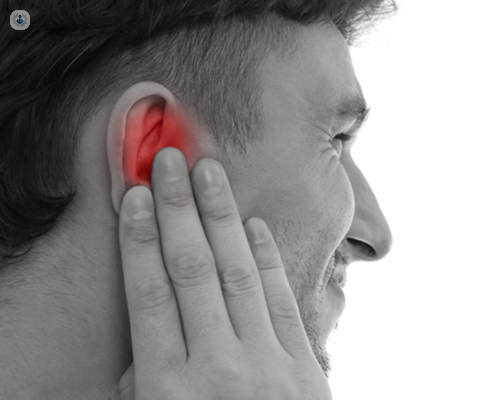What is Eustachian tube dysfunction?
Autore:Find out all about Eustachian tube dysfunction in our latest article here below, as esteemed consultant ENT surgeon, Mr Abdul Qureshi, explains all we need to know about the ear condition.

What is Eustachian tube dysfunction?
The Eustachian tube is a small passageway that connects the middle ear to the back of the nose and upper throat. Its main function is to equalise pressure in the middle ear, drain fluids, and regulate airflow, helping to maintain optimal hearing and balance. However, when the Eustachian tube becomes blocked or dysfunctional, it can lead to a range of symptoms and complications known as Eustachian tube dysfunction (ETD).
What are the causes of ETD?
ETD can be caused by various factors, including allergies, sinus infections, upper respiratory infections (colds), barometric pressure changes (such as during air travel or scuba diving), smoking, and anatomical abnormalities of the Eustachian tube. In some cases, ETD may occur spontaneously or be associated with underlying medical conditions such as chronic rhinosinusitis or temporomandibular joint (TMJ) dysfunction.
What are the associated symptoms?
One of the main symptoms of Eustachian tube dysfunction is ear pressure or fullness, often described as a feeling of "clogged ears" or "popping" sensation. Individuals with ETD may also experience fluctuating or muffled hearing, tinnitus (ringing or buzzing in the ears), ear pain or discomfort, dizziness or imbalance, and a sensation of fluid or congestion in the ears.
How is ETD treated?
Managing Eustachian tube dysfunction typically involves addressing the underlying cause of the condition and relieving symptoms. In cases where ETD is caused by allergies or sinus congestion, nasal decongestants, antihistamines, nasal steroid sprays, and saline nasal rinses may be recommended to reduce inflammation and improve Eustachian tube function. Avoiding known triggers, such as tobacco smoke or allergens, can also help alleviate symptoms.
For individuals with chronic or recurrent Eustachian tube dysfunction, other treatment options may include tympanostomy tubes (ear tubes), which are small tubes inserted into the eardrum to allow for drainage of fluid and equalisation of pressure in the middle ear. Tympanostomy tubes are commonly used in children with persistent ETD or frequent ear infections but may also benefit adults with severe enough symptoms.
What are some effective home remedies?
In addition to medical and surgical interventions, certain home remedies and self-care measures may help alleviate symptoms of Eustachian tube dysfunction. These may include chewing gum or swallowing to help open the Eustachian tube, performing the Valsalva maneuver (gently blowing with the nose pinched closed), applying warm compresses to the ears, and practicing techniques to promote relaxation and reduce stress.
If you would like to book an appointment with Mr Abdul Qureshi today, just head on over to his Top Doctors profile.


